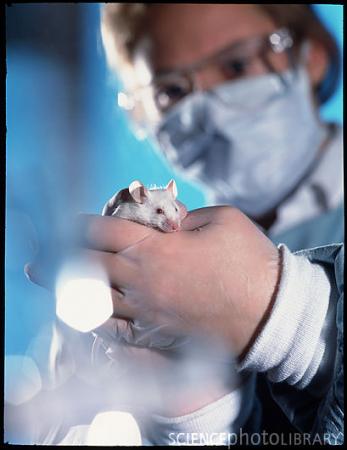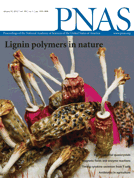 据英国广播公司(BBC)1月31日(北京时间)报道,美国科学家在《美国国家科学院院刊》上撰文指出,他们成功绕过干细胞阶段,将老鼠的皮肤细胞直接转化成神经前体细胞,得到的细胞能发育成三种脑细胞,而且能在实验室里大量培育。新方法为受损神经细胞再生提供了一条新途径,在医疗领域拥有巨大的应用潜力。不过,他们也指出,这项技术用于人体之前还需要进行很多研究。
据英国广播公司(BBC)1月31日(北京时间)报道,美国科学家在《美国国家科学院院刊》上撰文指出,他们成功绕过干细胞阶段,将老鼠的皮肤细胞直接转化成神经前体细胞,得到的细胞能发育成三种脑细胞,而且能在实验室里大量培育。新方法为受损神经细胞再生提供了一条新途径,在医疗领域拥有巨大的应用潜力。不过,他们也指出,这项技术用于人体之前还需要进行很多研究。
大脑细胞和皮肤细胞含有同样的遗传信息,然而,在“转录因子”的控制下,这两种细胞内的遗传代码被不同地解读。
在实验中,斯坦福医学院的马里厄斯•韦尼希斯领导的科研团队使用一个病毒激活老鼠皮肤细胞中的三种转录因子,这三种转录因子在神经前体细胞中具有很高的浓度。三周后,约十分之一的皮肤细胞变成了神经前体细胞,得到的神经前体细胞能发育成三种大脑细胞:神经细胞、星形胶质细胞和少突(神经)胶质细胞。而且,这些神经前体细胞还具有一个优势,那就是:一旦它们被制造出来,就能在实验室内大量培育,这一点对得到的细胞用于治疗非常关键。
韦尼希斯表示:“我们已经证明,这些细胞能整合进老鼠的大脑中并产生一个对神经细胞的电信号传导非常重要的蛋白质。我们对这些细胞的应用前景深感兴奋。”
科学家们表示,他们的最新研究绕过了中间阶段——干细胞阶段。干细胞疗法面临一个巨大问题:从何处得到干细胞?使用胚胎干细胞存在伦理争议;另外,当干细胞组织与病人的身体组织不匹配时,病人还需服用免疫抑制剂药物。替代方法之一是使用皮肤细胞并对其进行编程,让其成为“诱导”干细胞。这些皮肤细胞能从病人自己的身体中提取,也能变成病人需要的任何类型细胞,但这个过程会导致诱发癌症的基因被激活。最新研究绕过“诱导”干细胞阶段,将人体皮肤细胞直接转化为特定的细胞类型。
加州旧金山格莱斯顿心血管疾病研究所的发育生物学家迪帕卡•斯利维司塔瓦已成功地将细胞转化为心肌细胞,他说:“这项研究为我们使用细胞让受损的神经细胞再生提供了一条新途径。”不过,韦尼希斯也指出,在最新技术用于人体前,还需要进行很多测试工作以对其安全性和效率进行评估。
总编辑圈点
如果取下一小块皮肤样本,就能复制出大量神经元细胞,那么老年痴呆或者帕金森症就可能通过植入新生神经细胞而治愈——因为是自体细胞,不会有免疫排斥的问题。去年美国科学家发明了诱导新技术:用病毒激活一些基因,使皮肤细胞不经干细胞阶段就彻底“变身”为其他功能的细胞。病毒展露出的这种医疗潜力,不仅给患者带来希望,也激发出剧作家的想象力,近些年很多科幻电影就取材于此。

 Direct conversion of mouse fibroblasts to self-renewing, tripotent neural precursor cells
Direct conversion of mouse fibroblasts to self-renewing, tripotent neural precursor cells
Ernesto Lujan, Soham Chanda, Henrik Ahlenius, Thomas C. Südhofc and Marius Wernig
We recently showed that defined sets of transcription factors are sufficient to convert mouse and human fibroblasts directly into cells resembling functional neurons, referred to as “induced neuronal” (iN) cells. For some applications however, it would be desirable to convert fibroblasts into proliferative neural precursor cells (NPCs) instead of neurons. We hypothesized that NPC-like cells may be induced using the same principal approach used for generating iN cells. Toward this goal, we infected mouse embryonic fibroblasts derived from Sox2-EGFP mice with a set of 11 transcription factors highly expressed in NPCs. Twenty-four days after transgene induction, Sox2-EGFP+ colonies emerged that expressed NPC-specific genes and differentiated into neuronal and astrocytic cells. Using stepwise elimination, we found that Sox2 and FoxG1 are capable of generating clonal self-renewing, bipotent induced NPCs that gave rise to astrocytes and functional neurons. When we added the Pou and Homeobox domain-containing transcription factor Brn2 to Sox2 and FoxG1, we were able to induce tripotent NPCs that could be differentiated not only into neurons and astrocytes but also into oligodendrocytes. The transcription factors FoxG1 and Brn2 alone also were capable of inducing NPC-like cells; however, these cells generated less mature neurons, although they did produce astrocytes and even oligodendrocytes capable of integration into dysmyelinated Shiverer brain. Our data demonstrate that direct lineage reprogramming using target cell-type–specific transcription factors can be used to induce NPC-like cells that potentially could be used for autologous cell transplantation-based therapies in the brain or spinal cord.







